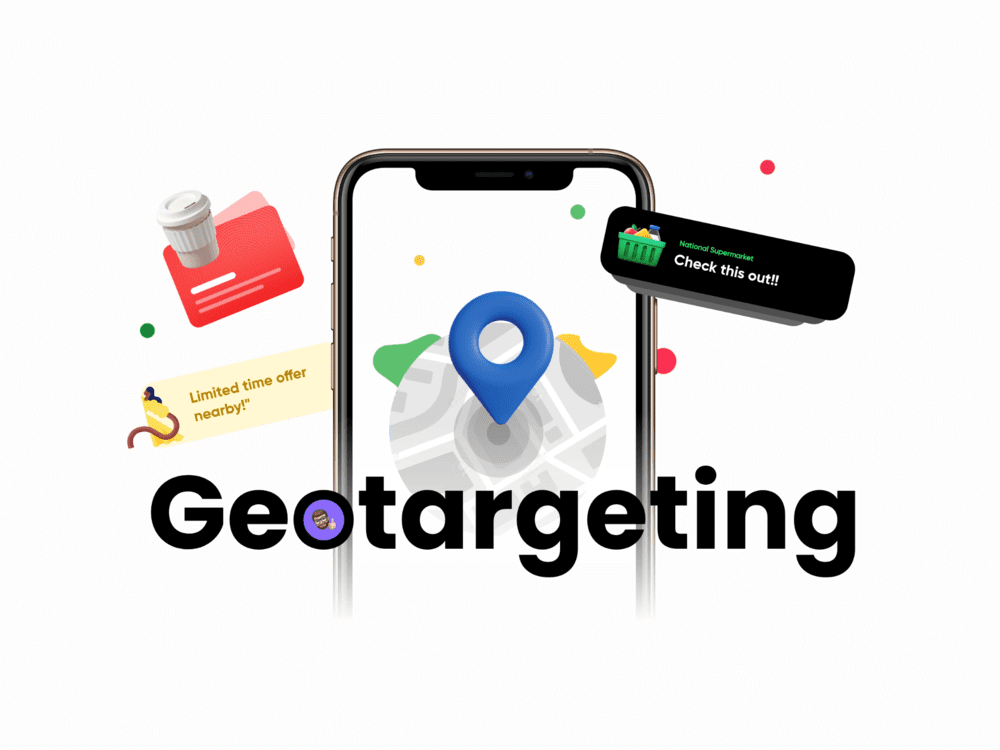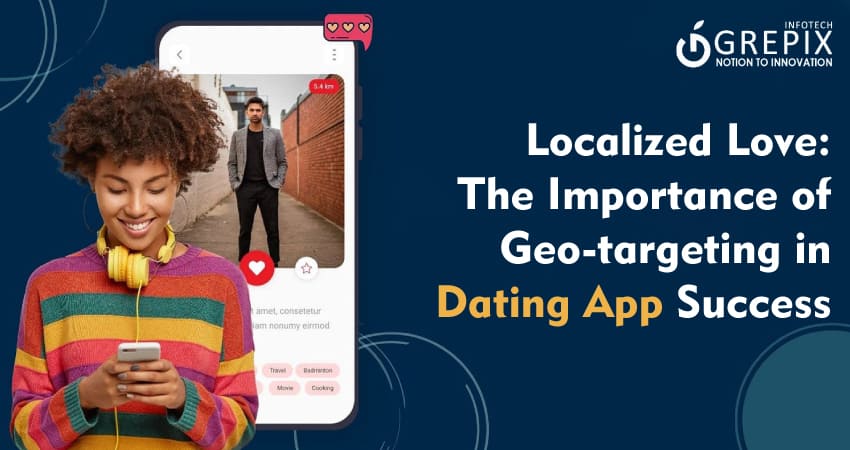Localized Love: The Importance of Geo-targeting in Dating App Success
In our fast-paced, hyper-connected world, finding the right romantic partner has taken a technological turn with dating apps becoming an integral part of our love lives. What sets successful dating apps apart is not just the algorithm or features, but the incorporation of geo-targeting technology. Geo-targeting, a strategy used to personalize user experiences based on location, has proven crucial in connecting people more effectively. By focusing on a user's geographical location, dating apps enhance the likelihood of matches, foster real connections, and significantly improve the overall user experience. This innovative approach not only streamlines the search for a partner but also enriches the encounter by connecting individuals who are conveniently located, thus paving the way for genuine interactions.
The blog highlights the pivotal role of geo-targeting in enhancing the success of dating apps by providing more relevant and geographically feasible matches. Geo-targeting personalized user experiences by utilizing location data to suggest potential partners in close proximity, fostering genuine connections and increasing the likelihood of real-world interactions. It boosts user engagement and satisfaction by allowing spontaneous meet-ups and shared local experiences. The blog also discusses the technological aspects, including the use of GPS and algorithms for precise matching, and the importance of privacy and security measures in handling location data, ensuring a safe and effective user experience in online dating platforms.

Understanding Geo-targeting in Dating Apps
Geo-targeting in dating apps is a technology that enables the app to offer services tailored to the geographical location of the user. It enhances user experience by connecting them with potential matches who are nearby, which increases the chances of real-world interactions. Here’s a deeper look at how geo-targeting works in dating apps and its implications:
Definition of geo-targeting
Geo-targeting is a technology that uses geographic information to influence content displayed to a user. In the context of dating apps, geo-targeting refers to the processes apps utilize to determine a user's location and deliver content—specifically potential matches—based on this locale. This technology enables a dating app development to filter and present profiles according to proximity, aligning with users' preferences for matches within a certain radius, be it as precise as a particular neighborhood or as broad as a country.
How geo-targeting works in dating apps
In the complex world of modern dating apps, geo-targeting operates through a blend of GPS technology, WiFi, and cellular data, pinpointing users' physical locations. Here’s how it typically functions:
- When a user signs up on a dating app, they grant the app permission to access their location, which can be continuously updated or retrieved when the app is in use.
- The app then uses an algorithm to match this location data with other users who have set similar geographical parameters for potential matches.
- Options can include adjustments such as setting a radius for matches, selecting preferred locations, or even excluding certain areas. This flexibility aids in creating a tailored, location-sensitive dating experience for each user.
Importance of Geo-targeting in User Experience
Customized matches based on location
One of the standout features of geo-targeting in dating apps is the ability to offer customized matches that relate to a user's specific location. This functionality is critical for several reasons:
- Relevance of Connections: Matches based on geographic closeness often hold a higher potential for relevance and personal connection, as they reflect a shared context—be it local culture, lifestyle, or social norms.
- Convenience: Proximity facilitates easier logistics for dates, reducing the time and effort involved in traveling long distances. It encourages more spontaneous and frequent meet-ups.
- Reduced Radius of Disappointment: By focusing on a defined geographic area, users might experience fewer disappointments related to logistical challenges, enhancing the overall efficiency of the dating process.
Enhancing user engagement through localized connections
Localized connections are not merely about physical proximity; they encompass the bonding over common landmarks, local eateries, and shared regional experiences. Here’s what makes them so effective in boosting user engagement:
- Cultural Compatibility: Meeting someone from the same area can often mean there are cultural similarities which make it easier to establish common ground.
- Shared News and Events: Opportunities to meet at local events, or discuss local happenings, keep conversations flowing and engaging.
- Community Feeling: Connections based on locality can contribute to a sense of community and belonging, as users feel more deeply connected not just to individuals, but to the locale itself.
Impact of geo-targeting on user satisfaction
The incorporation of geo-targeting technology significantly impacts user satisfaction in dating applications. This satisfaction stems from several areas:
- Efficient Matching: Users appreciate the efficiency and accuracy with which geo-targeting technology provides potential matches within their preferred locale.
- Increased Safety: Knowing that matches are within a close physical radius can contribute to a perception of safety and familiarity, which is particularly appealing in the online dating scenario.
- Emotional Resonance: Finally, being matched with someone from the same area can add an extra layer of emotional resonance to the connection, often leading to more meaningful interactions and long-lasting relationships.
In summary, the fusion of geo-targeting technology into dating apps not only fine-tunes the user experience by providing relevant, localized matches but also boosts engagement and satisfaction by fostering genuine, culturally resonant connections. As dating apps continue to evolve, the role of geo-targeting remains crucial in defining their efficacy and success, intertwining technology with the timeless quest for love.
Benefits of Geo-targeting in Dating App Success

Geo-targeting is transforming the landscape of mobile dating, turning chance encounters into calculated connections, and amplifying the success of dating apps around the globe. By incorporating location-based services, dating apps are not only becoming more efficient but are bending the arc of digital romance towards greater fulfillment and longevity.
Increased chances of meaningful connections
The fundamental aim of dating apps is to foster meaningful relationships, and geo-targeting helps by filtering potential matches based on proximity. This proximity allows for easier scheduling of in-person dates, which are crucial for taking relationships to the next level. When users can meet with less hassle, the opportunity for spontaneous meet-ups increases, leading to a more organic development of the relationship. Moreover, shared geographical locations often mean shared hobbies, cultures, and social spheres, which can lay down a robust foundation for a potentially enduring relationship.
Improved user retention rates

Geo-targeting exponentially enhances user satisfaction by consistently delivering relevant matches. Apps that effectively utilize this technology observe higher user engagement and retention, as users are less likely to feel frustrated by distant or irrelevant match suggestions. For instance, a user in a bustling city can receive matches who are just around the corner, making the app more practical and worthwhile for daily use. User retention is critical in the competitive landscape of dating apps, and geo-targeting can be a significant differentiator.
Also Read: "Creating Your Dating App: An Easy-to-Follow Guide"
Boosting app popularity through personalized recommendations
Through geo-targeting, apps can provide recommendations not just based on profiles visited or liked, but also by analyzing locations that users frequently visit. This method can suggest matches who not only align with a user’s interests but who also frequent the same coffee shop or park. This level of personalization not only delights users but also encourages them to keep using the app, thereby increasing its popularity and standing in the marketplace. Personalized recommendations make each user feel uniquely understood, enhancing their overall experience and satisfaction with the app.
Implementing Geo-targeting Strategies in Dating Apps

Integrating sophisticated geo-targeting features is not just about pinning locations on a map. It's about creating meaningful connections that are grounded in shared experiences and geographies. Here’s how some of the leading players are doing it and ways developers can imbue their applications with innovative geo-targeting capabilities.
Examples of successful geo-targeting features in popular dating apps
Tinder’s "Passport" feature allows users to set their location to anywhere around the world to swipe and match with users in those locations. This feature is particularly useful for users planning to travel and looking to meet people before arrival. Bumble uses a similar feature but adds more granularity by allowing users to adjust the radius of their searches to as small as possible, which is useful in densely populated cities where distances between neighborhoods can make a big difference. Happn takes a more immediate approach by connecting people who cross paths in real time, allowing for serendipitous meets that mirror traditional dating scenarios.
Tips for developers on effective integration of geo-targeting tools
For developers aiming to enhance their dating app’s functionality with geo-targeting, here are a few pointers:
- Opt for a high-quality location provider that offers comprehensive and accurate geographic data.
- Ensure the app’s user interface remains simple and user-friendly even with the addition of complex geo-targeting features.
- Regularly test different geo-targeting criteria to determine which combinations yield the most meaningful connections.
- Consider incorporating adjustable parameters that allow users to set their preferred location radius, which can vary significantly depending on urban or rural settings.
Ensuring user data privacy and security in geo-targeting implementations
While geo-targeting can significantly improve user experience, it also raises concerns about privacy and security. It is crucial for developers to implement robust protocols to protect user data. Anonymizing location data, securing data transmissions with encryption, and providing users with privacy controls are essential steps in building trust and maintaining the integrity of the app. Additionally, compliance with global data protection regulations, such as GDPR, is not only mandatory but also reassures users about the safety of their data.
Incorporating geo-targeting in dating apps not only elevates the user experience but also boosts the overall efficacy of these platforms in facilitating more meaningful, feasible, and timely connections. With careful implementation, consideration of privacy issues, and a focus on quality recommendations, geo-targeted dating apps can vastly improve the landscape of online dating, making the quest for partnership both enjoyable and successful.
Case Studies: Geo-targeting in Action
Success stories of dating app utilizing geo-targeting
Geo-targeting has become a linchpin in the success of many dating app, enhancing how users connect in meaningful ways. Consider Tinder and Bumble, two leading players that have seamlessly integrated geo-targeting into their user experience. For instance, Tinder location-based recommendations allow users to set a specific radius for potential matches, leading to increased engagement and a higher likelihood of finding a match in proximity. Similarly, Bumble uses advanced geo-targeting to sort user profiles according to the distance between them, promoting more feasible and practical dating options.
Another compelling example is Happn, which distinctively capitalizes on real-time geo-targeting by connecting people who have crossed paths physically. By mapping the location data where users meet, Happn offers a unique approach to forming connections, quite literally bringing the phrase "missed connections" to life. This method not only increases chances of dating but also adds a sentimental layer by rekindling brief encounters.
These examples illustrate the pivotal role geo-targeting plays in increasing user engagement and satisfaction by tailoring experiences that align with user preferences and real-time locations.
Analysis of user behavior and satisfaction with geo-targeted features
The implementation of geo-targeting features has shown significant effects on user behavior and satisfaction within dating apps. Data-driven insights reveal that users are more likely to engage with the app when matches are geographically accessible. Engagement metrics such as increased messaging, profile views, and swiping activity illustrate the importance of closeness in the decision-making process of users.
Customer satisfaction surveys further support these findings. Users often report higher levels of satisfaction when the app provides relevant matches that are logistically feasible to meet. Additionally, the element of control over location settings—where users can define their desired radius for potential matches enhances their comfort and satisfaction, as they feel more secure and involved in the matchmaking process.
Moreover, anecdotal evidence from user testimonials often highlights the convenience and excitement of meeting someone nearby, thereby verifying the effectiveness of geo-targeting in creating more meaningful connections.
Future Trends in Geo-targeting for Dating Apps
Evolving technologies for enhanced geo-targeting capabilities
As technology evolves, so do the capabilities of geo-targeting in dating apps. Advanced algorithms and more precise location technologies such as GPS, Wi-Fi, and Bluetooth Low Energy (BLE) beaconing are set to refine how apps determine user location and deliver matches. Future enhancements could include augmented and virtual reality, offering an even more immersive experience that lets users "meet" virtually in real-time, simulating physical presence before deciding to meet in person.
Additionally, Machine Learning and Artificial Intelligence (AI) will further personalize geo-targeting functionalities by analyzing user preferences and behaviors. Such innovations could lead to smarter, contextual-based matching that considers not only proximity but also the most likely settings where meaningful connections would occur, like favorite cafes or parks influenced by users' habits and lifestyle choices.
With these technological advancements, dating apps can look forward to delivering more intuitive and user-focused experiences that precisely understand and cater to the desires of their users.
Predictions on the future of location-based services in dating internetropolis
The future of location-based services in dating apps looks promising and is poised to revolutionize the romantic landscape. As urbanization continues to rise, and more people flock to cities, the density of populations will make geo-targeting an even more essential tool in dating apps. With urban areas becoming hotspots for dating activities, accurate and innovative geo-targeting solutions can dramatically increase chances for real-time connections.
Furthermore, privacy concerns and data protection are likely to remain at the forefront of the development of new features. Enhancements in data security measures to protect user information while providing location-based services will be crucial. Transparency with users about how their data is used and giving them control over their location settings will help maintain trust and encourage more widespread adoption of these technologies.
Lastly, as societal patterns evolve, so too will the use of geo-targeting, potentially integrating with social media platforms and other digital environments to further enhance connectivity and match accuracy. Thus, location-based services in dating apps are set to become more sophisticated, deeply integrated, and socially accepted as essential tools for modern dating.
In sum, geo-targeting is not just a technological attribute but a gateway to enhanced user experiences, holding profound implications for the efficiency and success of dating platforms. As highlighted through various success stories and predictive insights, it is evident that the focused application and continuous evolution of geo-targeting technologies are crucial for crafting future paths in the realm of digital dating.
Conclusion
In the dynamic world of digital matchmaking, the deployment of geo-targeting in dating apps is not just a feature—it’s a fundamental catalyst for user success. By focusing on localized love, these apps not only refine the match-finding process but also enhance user satisfaction by lining up dates that are logistically feasible. Geo-targeting helps foster more meaningful connections by emphasizing shared local experiences, venues, and cultures, thereby increasing the odds of compatibility and ongoing engagement. Users often find that having common stomping grounds enriches initial conversations and sets the stage for a smoother transition from online interaction to in-person meetings.
Moreover, dating apps armed with geo-targeting capabilities are better equipped to customize user experiences, allow for spontaneous meetups, and diminish the obstacles of distance—factors that are key in the modern dating landscape. The importance of geo-targeting in dating apps is clear, delivering not just matches, but the right matches, leading to real stories of love and companionship. As the digital age continues to evolve, these location-based services will undoubtedly play a critical role in shaping the future of romantic connections.
Launch your vision with our mobile app development company, where innovation meets excellence to create cutting-edge mobile solutions.








